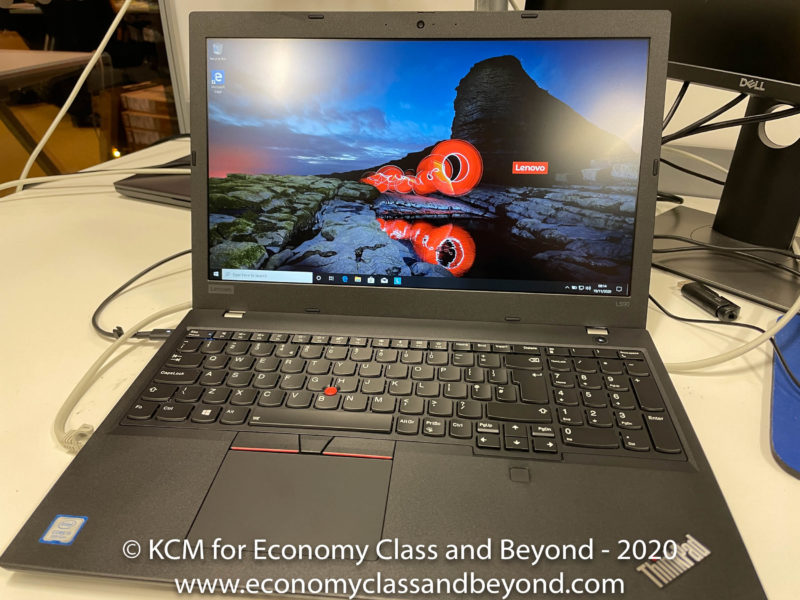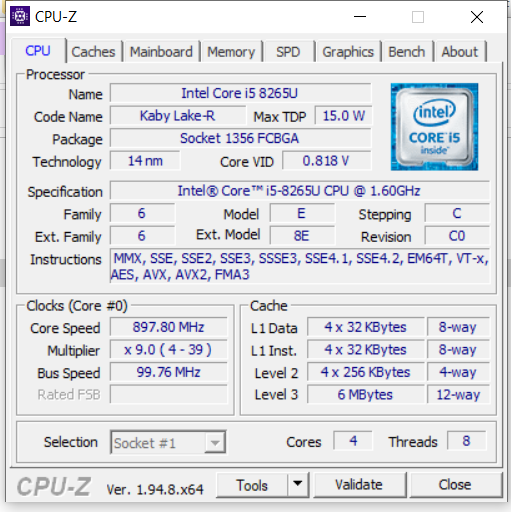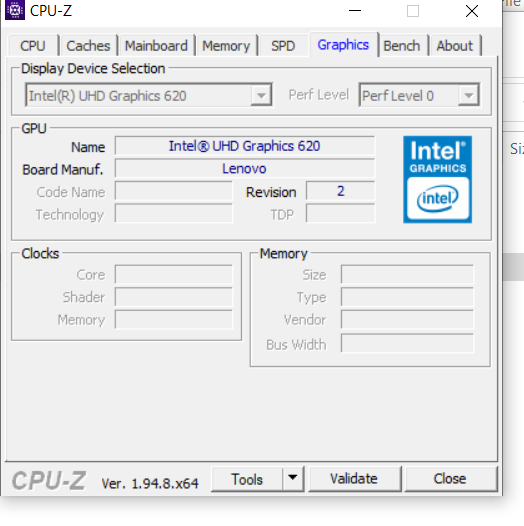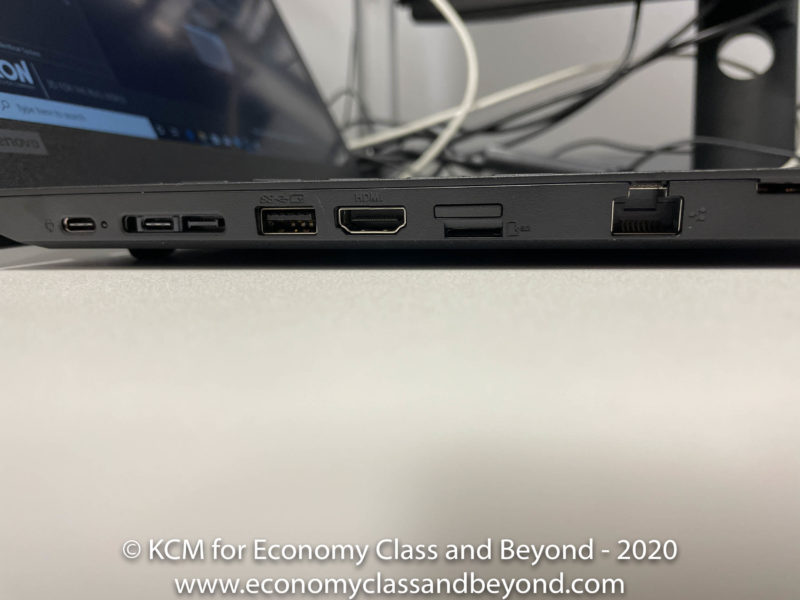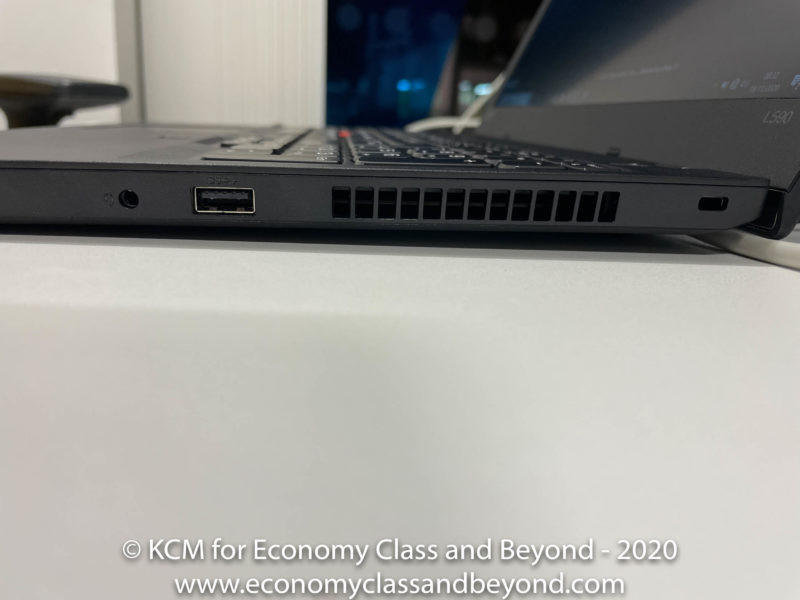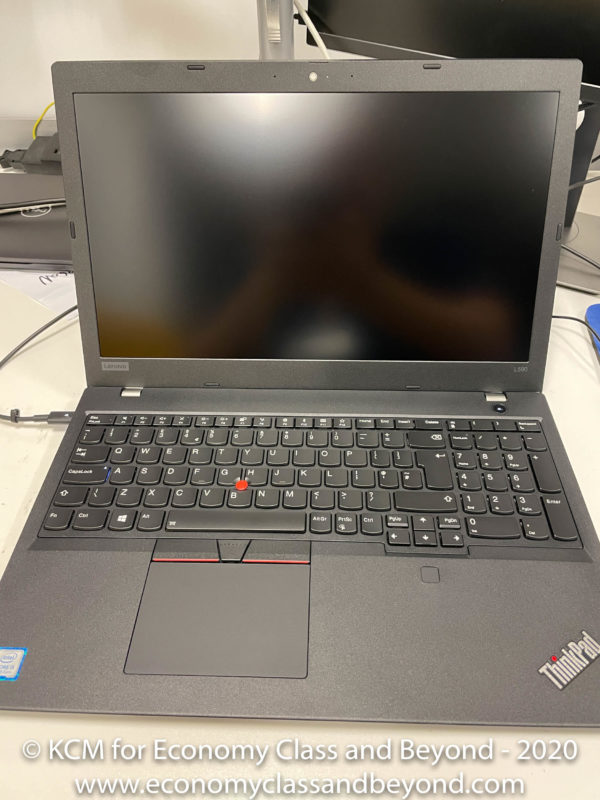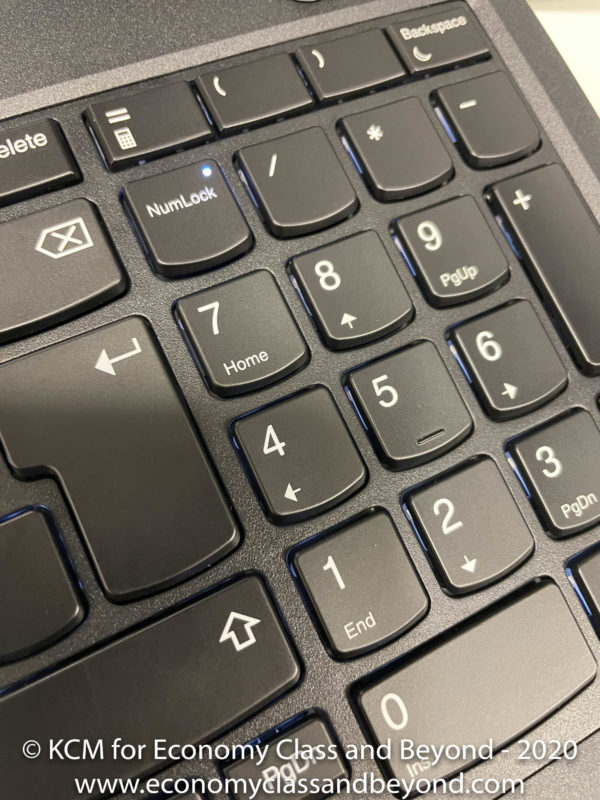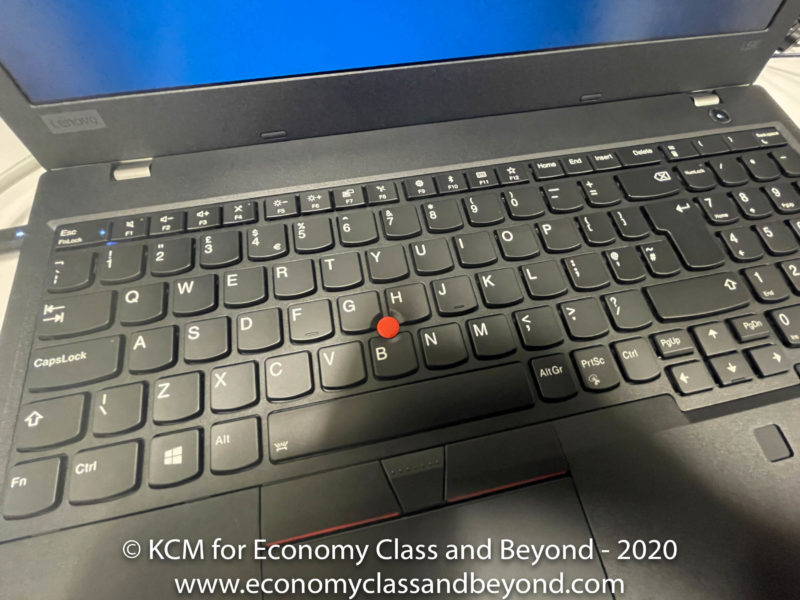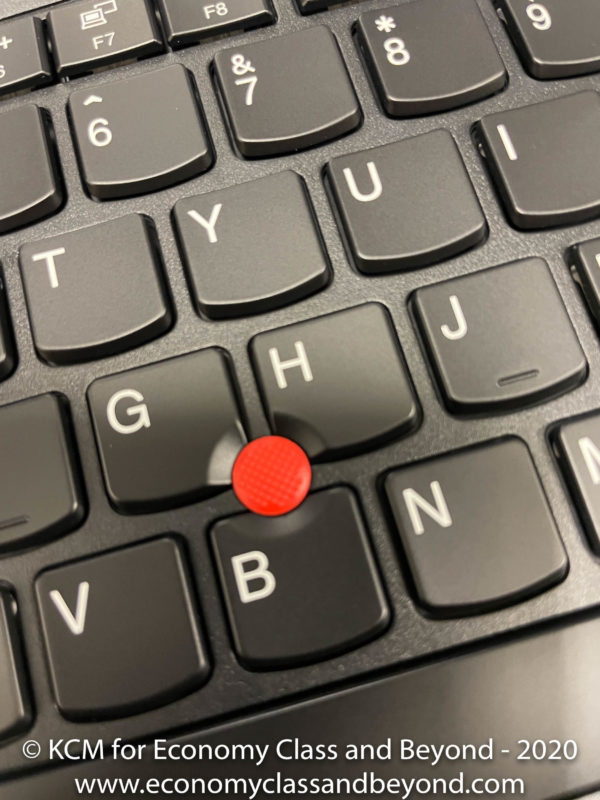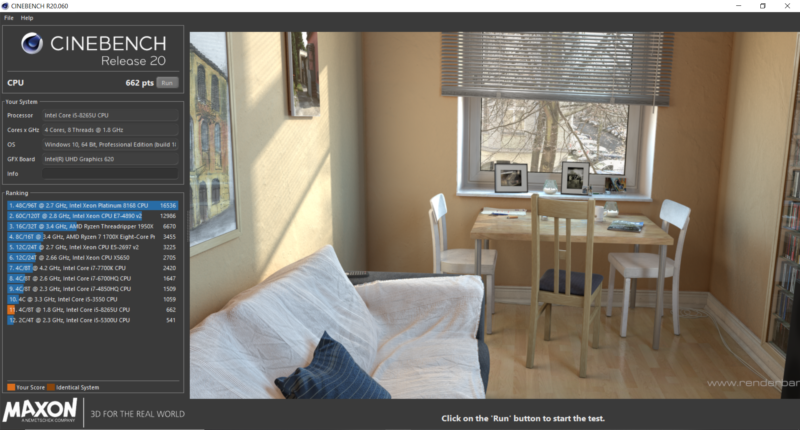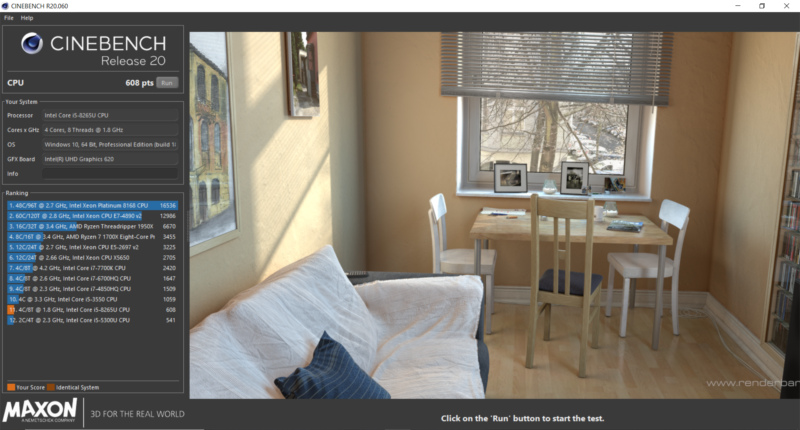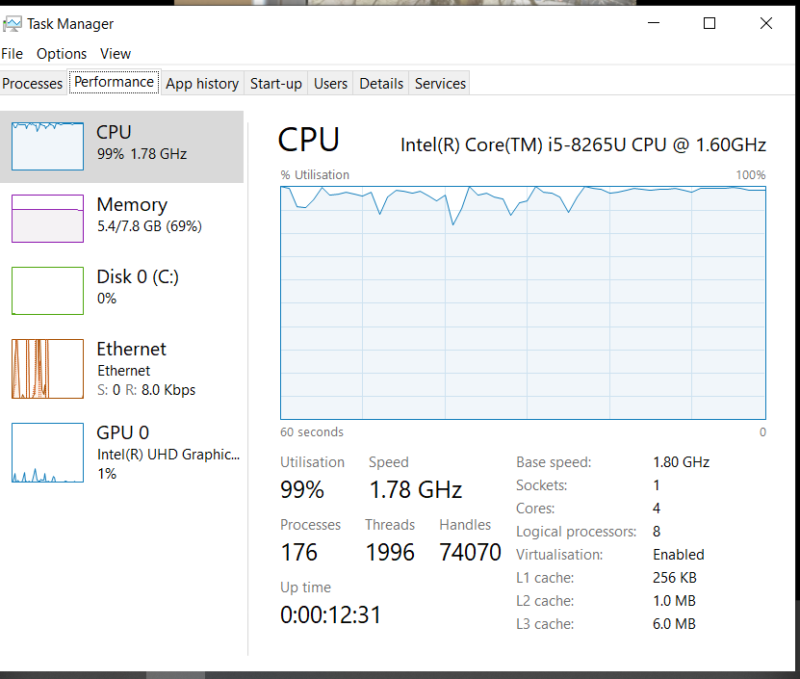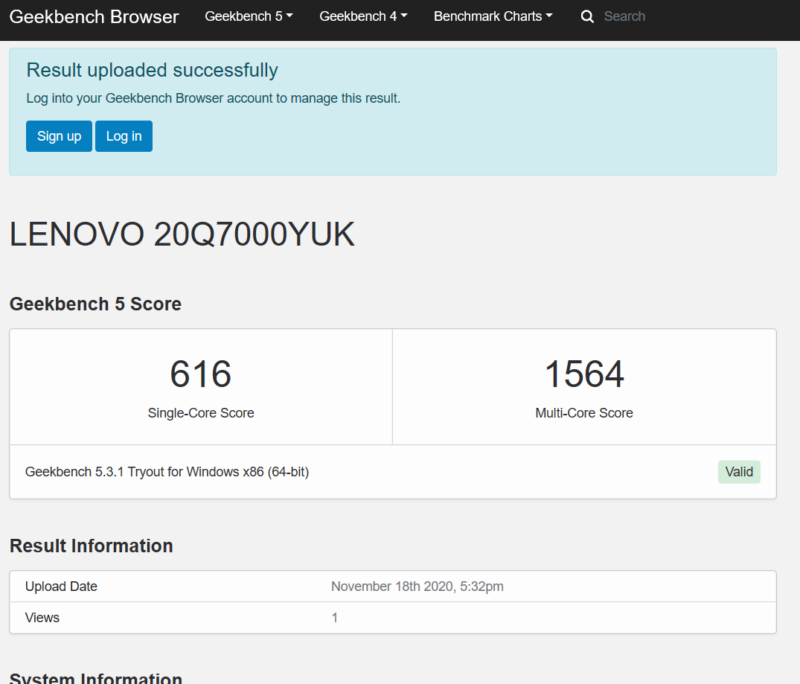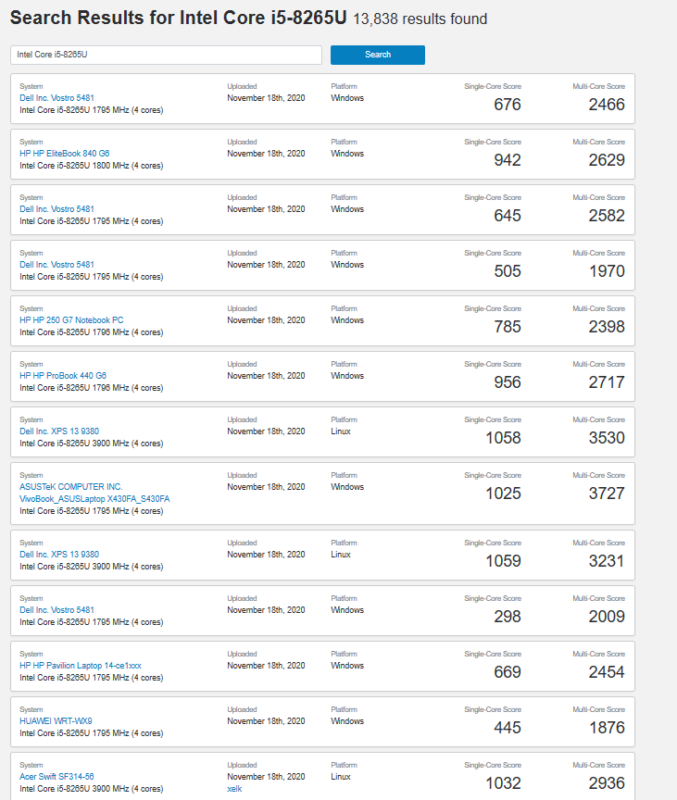It’s time for another bench test, this time featuring the Lenovo L590. How does the big boy from Lenovo measure up… or should you hard pass-pass on this laptop without opening the box?
Like the Surface Laptop and Dell Lattitude 5400 review, this is going to be much more of a “hands-on” review rather than full of benchmarks and how it behaves in day to day life.
What is it?
The Lenovo L590 laptop is a mid-level laptop. It’s a large form factor – favouring a desktop replacement design rather than a mobile experience. It comes in at 376.5mm x 254.5mm x 22.95mm, starting at 2kg upwards. Whilst it is portable, the size might weigh you away from taking away from your desk often.
Specifications as tested
With Dell, you can customise to a laptop to your heart’s content, but here’s the one I’ve tested as delivered to me:
- Processor: Intel Core 8th Generation i5-8265U
- Graphics: Integrated Intel UHD 620 Graphics
- Memory: 8Gb memory
- Storage 256Gb nVME Solid State Drive
- 15.6” Wide Viewing Angle Display with Matt Coating (VA panel)
- Camera and Microphone
In the box
Those of you looking for all the things that come with the laptop may be disappointed. In the box, you will find:
- The laptop itself
- A 65 Watt Lenovo USB-C Charger
- A power cable
Sparse, but enough to get you going.
Looking around the device
Let’s have a quick look at the ports on this laptop On the left-hand side: https://www.lenovo.com/gb/en/laptops/thinkpad/l-series/ThinkPad-L590/p/22TP2TBL590
- USB-C (Gen2 with power delivery)
- USB-C (Gen1)
- Network extension for Ethernet
- USB 3.1 (Gen 1)
- HDMI (full-sized)
- MicroSD Card Reader
- RJ45 Ethernet connector at 10/100/1Gb
- Smart card reader
On the right-hand side
- Headphone / mic combo
- USB 3.1 (Gen 1)
- Kensington lock slot
The casing and build quality
If Dell’s build was mediocre but solid, this Lenovo is… well. Awful. There’s no other word for it. Again, whilst it is a grey plastic block, the case plastics felt hollow and fragile, compared to other laptops I’ve run into. This is one laptop I would feel you need to mollycoddle and take care for if you take it out of the house.
Here’s a little video of the plastic sound. It sounds… more than a little hollow doesn’t it?
The Screen
I didn’t find the screen to be that bright – compared to some panels I’ve used on other laptops recently. This can be put down to the VA (Vertical Alignment) panel – compared to the IPS panels I’ve been using (Tom’s Hardware has a good primer on the technologies). This laptop is available with an IPS panel too.
Whilst the screen is large at 15.6″, it is still a full HD screen (1920 x 1080). As such, icons are larger, however, the pixel density is lower than a 14″ screen. Although those bezels do not make for a great experience
If you’re working from home, you might want to invest in another screen (and preferably, an IPS display if you’re using it for business use) – your eyes will thank you. The screen is a 15.6″ model, displaying in Full-HD (1920 x 1080).
It was “ok” at displaying content, with reasonable viewing angles from one side of the desk to the other. Just a lot dimmer than some I’ve been using recently. Those with colour-accurate needs should look elsewhere unless you’re going to spend hours calibrating this screen.
Audio
Passable. Nothing to write home about, but Crab Rave and Keiino’s Spirit in the Sky seemed to be passable, if a little lacking.
More than a little tinny for my liking – which for a chassis like this, is a bit worrying.
The Keyboard and TouchPad
Lenovo might have inherited the IBM ThinkPad design, but it isn’t the best keyboard I’ve used in my time. Key travel was passable, but the the number pad was more than a little useless, due to its closeness to the enter key – a little separation would had helped here.
The chicklet keys have a reasonable touch, but little feedback for those of you who are touch typists.
It also comes with a trackpad which isn’t bad but doesn’t excel in any way, supporting some multi-touch functions.
For those who are lovers of pointing sticks, there’s one here that is useful if you’re a fan of that input method, with a classic red nub.
Thankfully, there’s more than enough connectivity on the machine to add a mouse on if that’s your preferred pointing method.
Weight
That laptop comes in at 2.03 kg (4.47 lb). The weight isn’t the problem here – rather the 15.6″ form factor which will make it unweildy for the road.
Authentication Methods
In Windows, this laptop will support a SmartCard, PIN or Password to gain access to the computer, as well as fingerprint authentication, allowing for Windows Hello to be active. The camera does not support facial login options.
Battery
Lenovo rate this battery for up to 12 hours on the road. the laptop comes with 4080mAh 45Wh Battery built-in. Following the modern design language of laptops, the battery is not swappable easily and requires the back of the laptop to be removed to access the battery.
The battery should see you easily through a business day if doing light tasks. If you’re doing heavy tasks (or running Windows update), expect the battery to drain in around five to six hours or so.
Expandability
There is a USB-C/Thunderbolt port on the device, for those of you who need to expand. This allows you to connect a dock to it, so you can connect monitors and other devices to it.
In the configuration delivered, the laptop I have has USB-C 3.2 on, allowing Displayport to be used, as well as Power Delivery (allowing you to charge with a USB-C Charger, a USB-C Hub or Dock) Otherwise, it has three USB 3.1 A ports to plug-in peripherals, onboard networking as well as Wi-Fi.
In Testing
Let’s do a Cinebench just to please those who love benchmarks. As usual, I’m running Cinebench R20, because everyone loves a Cinebench score.
The laptop runs an Intel i5-8265U (ultra-low voltage) CPU. It has four processing cores and eight threads for multitasking. With a base clock of 1.6ghz, boosting to 3.9Ghz, I’m expecting a reasonable performance in this benchmark. And I was shocked at how low the score was at 662 Cinebench points in a multi-threaded test.
This was more than concerning. I re-ran the benchmark to confirm my findings, getting a slightly lower score of 608, keeping task manager open
Looking at Task Manager, I saw something more than a little concerning – the process was ticking around 200mhz above base close with it dropping a lot below the base clock.
Why? Compared to a Dell 5400 with exactly the same CPU, it clocks in at just under half of the performance with a score of 1254. To compare, the Surface Laptop 3 I use clocks in at 1563.
Running GeekBench, the scores were abysmal too, with scores around half what I would expect from a CPU like this
Why do I say this? Let’s compare other systems with the same CPU
Whilst there is some variance as you can see – this processor can boost a lot higher than Lenovo is setting it. I double-checked and re-ran the benchmark, ensuring it was in “High Performance”, with similar results.
I tried a few other tasks on these devices (such as installing Windows Updates, running Microsoft Office and Edge), and it felt sluggish.
For a CPU to be clocked down this low, would point to thermal issues – except I couldn’t hear or see anything that would indicate. That or Lenovo have gone for a very conservative implementation of the Intel specification.
I did see the processor boost to 2.7Ghz – but never above that – compared to the Dell 5400 which was hitting 3.5Ghz.
Use Cases
With the larger form factor, this is designed for the “docked worker” who needs a “mobile second” device, rather than a primary device. However, whilst those who crunch numbers will appreciate the number pad, the performance makes it a frustrating experience.
Certainly, this isn’t aimed at the mobile worker in the field – the form-factor doesn’t meet that.
Those who like larger screens due to eyesight may like the larger form factor too – but I’d expect you to invest in a monitor if you’re using one for more than a few hours at a time if you’re going have this at your home desk.
Dear IT Managers and Fleet purchasing people – skip these. Home users, you too
Quite frankly, I’m amazed this device made it out to market. It is hobbled at best by inadequate cooling – holding back the possible performance of this processor and the build quality is not what I’d expect from a corporate workhorse.
 If you get this laptop… you’ll be seeing a lot of this.
If you get this laptop… you’ll be seeing a lot of this.
For IT asset managers, it’s always worth getting a test device or two – before mass buying products – to ensure they meet your requirements. This is especially important when making fleet purchases – because this is when you’ll be buying them by 1000 at a time. Giving your IT department one or two to evaluate these performance flaws will save hours in the long run in terms of user feedback and helpdesk calls about “Why is my computer so slow”.
That and the build quality should raise enough flags for those who plan to carry this laptop between home and work each day, requiring additional protection in cases
Because this thing will break with ease thanks to the poor plastics used, whatever promises Lenovo will make. At least the devices seem to be serviceable – something IT departments will have some happiness about
Home users – when these come on the second-hand market, please stay away (unless you’re offered a bargain-basement price). If these are hobbled in the prime of their lives, when they get to you after three years and a refresh, the processor will be tired out. Again, look at Dells and other laptop brands.
And do a little research. It could save you some frustrating nights when the computer is taking forever to do its Window updates before you want to go to bed…
Disclosure – This laptop came to me for testing during my normal line of work. Testing was carried out of work hours over an evening whilst I was waiting for – you guessed it – Windows Update to start on other computers..
Welcome to Economy Class and Beyond – Your no-nonsense guide to network news, honest reviews, with in-depth coverage, unique research as well as the humour and madness as I only know how to deliver. Follow me on Twitter at @EconomyBeyond for the latest updates! You can also follow me on Instagram too! Also remember that as well as being part of BoardingArea, we’re also part of BoardingArea.eu, delivering frequent flyer news, miles and points to the European reader.
